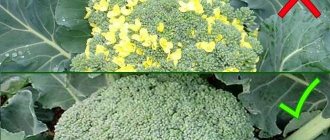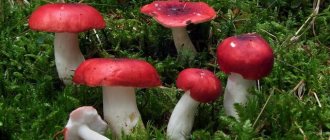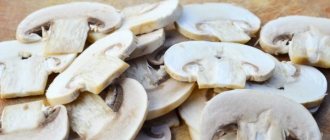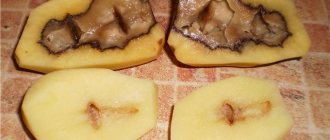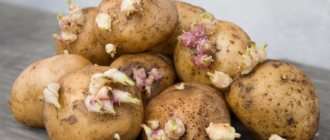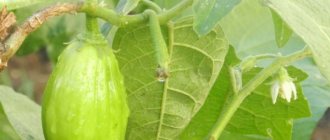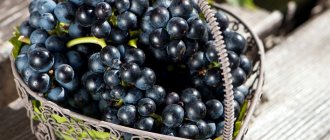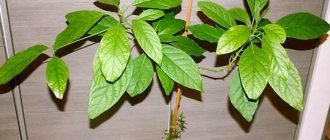In addition to vitamins, micro- and macroelements useful for the human body, potatoes contain solanine. This is an organic compound, a poisonous glycoside, which is present in any part of the plant - in leaves, fruits, tubers, stems. For potatoes, it serves as a natural protection against damage by bacteria and some types of insects, and is toxic to humans. The highest concentration of solanine is in unripe green fruits.
What is solanine, what is its toxicity and harm to the body, what are the symptoms of poisoning and first aid, why do potatoes turn green in the light, can they be eaten, why are green potatoes dangerous - read the article.
Why do potatoes turn green when stored in light?
There is little solanine in mature potatoes - 0.005%, but during long-term storage it accumulates. The deciding factors are temperature and sunlight.
So why do potatoes turn green in the light? The fact is that chlorophyll is present in all parts of the plant, including tubers. This is a green pigment responsible for the green color and the process of photosynthesis, during which organic substances are formed from carbon dioxide and water under the influence of sunlight in the plant body.
During evolution, the above-ground part of the plant became green to better capture the necessary sunlight. Tubers located underground are not initially green, since the sun's rays do not penetrate into the soil. Also, tubers do not turn green in artificial light, because the process of photosynthesis is possible only under the sun.
Why are green potatoes dangerous?
Solanine is a strong poison; it is normally found in ordinary potatoes, which have a natural yellowish or pinkish tint.
Why are green potatoes dangerous?
- Light fruits have a very low concentration, approximately 0.05%.
- But closer to autumn and spring, with improper storage and exposure to direct sunlight, this poison is released as a result of chemical reactions under the influence of ultraviolet rays.
- Due to this, the part of the potato that was exposed to sunlight turns green. This suggests that it is in these areas that the maximum concentration of solanine is found.
Effects of solanine on the human body:
- Causes inhibition of all parts of the nervous system
- Promotes the breakdown of red blood cells and their destruction
- Promotes poor digestion and interferes with food digestion
- Impairs vision
- Increases body temperature
For sale
Is it possible to eat green potatoes?
For those who are interested in the question of whether it is possible to eat green potatoes, we answer that green potato tubers are inedible . Heat treatment (boiling, stewing, frying) does not destroy solanine. If ordinary green potato fruits contain 0.005% solanine, then green potatoes contain 0.1%, and tops generally contain 0.25%. In addition, such potatoes have an unpleasant bitter taste and are slightly astringent in the mouth.
What if you cut off the green part?
Experts categorically do not recommend eating green potatoes, but at the same time they say that after removing the surface of the peel to a depth of 1 cm and prolonged heat treatment, the fruits remain edible. However, when planting a quarter of a tuber, eating it is strictly contraindicated, as is feeding it to animals. Root crops must be destroyed or used as planting material.
Solanine successfully resists fungal microorganisms and harmful insects . Therefore, green tubers are high-quality planting material. Such root crops give a higher yield, 20% higher compared to ordinary fruits. Agronomists even recommend keeping the planting tubers in the sun for several days until the underground shoots turn green and grow.
Interesting things about potatoes:
How dangerous are potatoes and can you get poisoned by them?
How to use potatoes to treat various diseases
How to test potatoes for nitrates at home
What happens if you eat green potatoes
Why are green potatoes dangerous? A small portion of unripe potato tubers does not threaten human health and life, especially if the root vegetables have been cooked before cooking. Solanine poisoning is possible after eating several kilograms of unpeeled green potatoes without heat treatment. Potatoes, 100 g of which contain 40 g of solanine, are considered life-threatening.
Planting material
Is it possible to plant green potatoes? Certainly. This will not affect the future harvest in any way. On the contrary, several positive qualities can be identified. For example, seed green tubers have a higher immunity to the most common diseases and are less susceptible to attacks by insect pests. In addition, both gardeners and agronomists noticed that in green specimens sprouts appear earlier, and they are stockier, stronger and brighter. As a result, the harvest is richer and of better quality.
Sometimes greenish specimens are found already when harvesting potatoes. Why do potatoes turn green before harvesting? Because the bushes were poorly hilled. Every experienced gardener tries to form the largest possible piles of soil under each bush. And it is right. With high-quality hilling, the root system grows well and produces a larger number of large tubers. During the growth process, they are reliably protected from exposure to sunlight, so they will not change the color of the peel.
But it also happens that heaps of earth are gradually destroyed by rain, winds and other natural factors. Therefore, it is important to monitor the area. If streams of water have washed away the hilled beds, they must be restored immediately (additionally sprinkled with earth), otherwise green potato tubers will appear.
If, during harvesting, potatoes with bright green spots still appear, they can be selected, placed in a separate box and sent for storage. Such specimens are perfectly stored, do not rot, do not deteriorate, and even rats do not want to eat them. In spring they can be used for planting. Some summer residents who made mistakes during storage or did not create the proper conditions face this problem in the spring. They open the vault and see green potatoes. If the potatoes turn green, what should you do? The same as in all other cases - select for planting.
To avoid spring sorting, you need to think about the safety of the harvest in the fall. If sunlight penetrates into the basement or cellar, all sources must be securely closed. It is recommended to place the tubers in thick bags made of natural fabrics or cover the boxes with potatoes with a blanket, rags and other covering material. This recommendation is also useful for those who store crops on the balcony or in utility rooms.
What is solanine and why is it harmful?
Solanine is a poisonous glycoside that is produced in plants of the nightshade family and is found in any part of the plant. As for potatoes, there is especially a lot of solanine in the peel and sprouts.
In regular potato roots the level of solanine is 0.005%, in green tubers it is much higher. Upon reaching maturity, the vegetable becomes whitish, yellowish or reddish depending on the variety, and the solanine content decreases. And the fruits can be eaten after heat treatment.
Attention! Solanine is toxic to humans even in small doses. It causes stimulation and depression of the nervous system, then depression and destruction of red blood cells. High doses of the alkaloid can cause fever, convulsions, and dehydration, which can be fatal for a weakened body.
What happens if you eat in large quantities
Severe degree of danger - solanine content in a concentration of 200-400 mg per 100 g of product. This is about a kilogram or two of potatoes, including the peel.
If such an amount is sent into the stomach, the following may occur:
- cardiovascular abnormalities;
- renal dysfunction;
- convulsions;
- fainting.
Death may occur if the 500 mg threshold is exceeded. Raw, green potatoes are considered the most dangerous. When they started feeding it to pigs, mass mortality began. In boiled root vegetables, the concentration of solanine is much lower.
What diseases can it cause?
Solanine does not act selectively. It destroys the body comprehensively, penetrating into the blood, and from there into many organs, affecting the liver, kidneys, heart, and gastrointestinal tract. At small concentrations of the toxin, the body begins to heal itself, trying to get rid of unwanted consequences. The person experiences vomiting and diarrhea.
In more severe cases, serious disorders are possible:
- disruption of the respiratory system;
- problems with the gastrointestinal tract;
- neurological disorders;
- development of heart and blood diseases;
- change in the process of hematopoiesis.
The toxin destroys red blood cells and in severe poisoning affects the skin. This is why you should not eat green potatoes in large quantities.
Signs of solanine poisoning
Due to the accumulation of toxic substances in the body beyond the norm, intoxication occurs. When taking a small dose , there is a latent period during which the person feels satisfactory.
The asymptomatic period lasts on average 2-6 hours, sometimes shortened to 30-60 minutes or lasts about 24 hours. A mild form of poisoning is manifested by nausea, vomiting, stomach pain, headache and dizziness, and diarrhea. The frequency of stool can reach up to 10 times a day.
In case of moderate poisoning, the symptoms are similar, only brighter . The victim complains of lethargy, muscle pain, general malaise, decreased endurance and performance. Loss of fluid through vomiting and stool has an adverse effect on the condition of the skin: it becomes dry, flabby, and facial features become sharper.
In severe forms, typical signs of poisoning are pronounced . The central nervous system is often affected, which is manifested by hallucinations, speech and vision disorders, euphoria, convulsions, and coma. When exposed to the cardiovascular system, arrhythmia, tachycardia are observed, and blood pressure drops. As a result of cardiac dysfunction, coma or death may occur.
First aid for solanine poisoning
A set of emergency medical measures begins with washing the stomach to clean water and administering an enema to remove toxic substances. For the same purpose, enterosorbents are prescribed, which have an antidiarrheal effect, absorb and remove glycosides and other compounds from the body.
If treatment and preventive measures do not help , the symptoms worsen and general health worsens, call an ambulance or take the victim to the hospital.
To prevent dehydration, replenish fluid loss . They drink sweet tea, saline solution, still mineral water. For moderate forms of poisoning, parenteral rehydration therapy is carried out - the necessary solutions are injected into a vein through a dropper.
Take note:
Raw potato face masks
Recipes for homemade potato masks against wrinkles
Symptoms of intoxication and first aid
Solanine poisoning is possible when consuming large amounts of fried (baked, especially in their jacket) potatoes with green skins or raw potato juice.
A person may be bothered by the following symptoms:
- nausea, vomiting;
- intestinal colic;
- diarrhea;
- dilated pupils;
- migraine type headache;
- fever;
- convulsions;
- hallucinations;
- rapid heartbeat (then slowing down);
- sore throat.
The patient needs to rinse the stomach, give enterosorbent and astringent liquids (for example, a decoction of oak bark). If you have the last four symptoms above, call an ambulance without delay.
Although there are no documented cases of green potato poisoning, this does not mean that none have occurred. People often do not seek medical help and simply do not understand the reasons for their poor health. Many negative health effects do not appear immediately, but over time. If you doubt the safety of a product, discard it. You shouldn't risk a valuable resource to save money.
Precautionary measures
The best method of prevention : grow potatoes in guaranteed safe conditions, without nitrates and other toxic substances. If you buy potatoes, pay attention to the appearance of the fruit and storage conditions. Don't buy the first new potatoes because there is a chance that they will be overloaded with nitrates.
Pay attention to the peel and integrity of the tubers . High-quality potatoes have a dense skin that is difficult to damage with a fingernail; they do not have black spots or signs of damage by insects.
It is not advisable to eat green potatoes , but it is possible after removing a thick layer of peel and prolonged heat treatment. You need to know moderation in everything: even in a healthy person, large portions of a high-quality product can provoke negative manifestations - constipation, allergies, exacerbation of type 2 and 3 diabetes.
Advice. Experts recommend, if possible, choosing medium-sized fruits, since large fruits contain salts and esters of nitric acid, which are toxic to humans, and small ones have not yet had time to grow and ripen.
Raw potatoes have turned green, what to do with them
If a person notices that his potatoes have turned green, then, of course, you can immediately throw them away and forget about the problem. After all, poisonous potatoes, theoretically, can kill - who would want to take that risk?!
If possible, it is better to refrain from using it altogether. A large amount of this substance (corned beef) can kill a person.
Situations are different, if after the tubers have turned green, a person is in no hurry to throw them away, then you can:
- remove the green peel with a knife and boil the potatoes;
- leave for seeds.
If the second option is chosen, then it can be called reasonable: for humans, corned beef is a poison, the appearance of which was influenced by the sun's rays, but if you use such potatoes for seeds, then there will be nothing terrible for humans.
Rules for storing potatoes
The accumulation of solanine and sugar - glucose, fructose, sucrose and maltose - in potato tubers can be regulated by changing the temperature and humidity of the air, avoiding direct exposure to sunlight. Optimal conditions for storing potatoes : temperature from +2 to +5°C, air humidity - 85-90%. Under such conditions, more sugar is consumed than produced. At temperatures above +5°C, tubers begin to develop and axillary buds sprout on them. When the temperature drops to 0°C, starch is converted into sugar, and maltose accumulates in the fruits.
To store crops at home, it is ideal to use a cellar or vegetable storage. The room must maintain constant conditions - darkening, low temperature, fresh air.
Preparation for potato storage begins immediately after harvest . The tubers ripen in August-September; during this period it is necessary to remove the root crops. If potatoes are in the ground for a long time, they begin to absorb excess moisture, which adversely affects the taste and reduces their shelf life.
You cannot wash potato tubers before storing them in the cellar . Initially, they must be cleaned of dirt by hand, laid out in a well-ventilated area or under a canopy so that the root vegetables dry well.
Attention! Avoid direct exposure to sunlight.
Next, you need to sort the potatoes by tuber size and remove damaged fruits . If you grow your own potatoes, immediately separate part of the crop for planting. Carefully pour the potatoes into bags so as not to damage the tubers, and lower them into the cellar. In the cellar, it is better to store vegetables in wooden boxes or pallets. If you scatter potatoes on the floor, there is a high risk of losing part of the harvest.
Containers must have holes for free air circulation ; they cannot be placed on the floor or close to walls. Before planting the crop, it is advisable to treat the boxes with an antiseptic and dry them well. To protect the crop from damage by insects, vegetable growers recommend sprinkling the crop with ash, chalk, and laying out bags of wormwood, elderberry or rowan leaves.
periodically check the condition of the potatoes and remove damaged or rotten tubers.
Advice. To further protect the potatoes from the cold, you can cover them with felt and sprinkle sawdust or straw on top. It is ideal to store beets on top of potatoes. It not only helps to retain heat, but also absorbs moisture well.
How to prevent potatoes from turning green
Fortunately, reports of solanine poisoning are rare. However, the data may be underestimated due to the general nature of its symptoms. Potatoes that contain unacceptable levels of solanine usually don't make it to the grocery store. However, if potatoes are not properly processed, they can produce solanine after they are delivered to the supermarket or stored in your kitchen. Therefore, proper storage of potatoes is important to prevent higher levels of solanine from occurring.
Physical damage, exposure to light and high or low temperatures are the main factors that stimulate potatoes to produce more solanine.
Before purchasing potatoes, be sure to check them for damage or greening. At home, store it in a cool, dark place, such as a basement. To protect from light, it should be stored in an opaque bag or plastic bag.
Refrigerated storage is not ideal because it is too cold for the potatoes. Some studies have even observed increased levels of solanine due to storage at low temperatures, such as in the refrigerator. Moreover, the average kitchen or pantry is too warm for long-term storage.
If you don't have enough space to store potatoes, purchase only the quantity you plan to use. Store it in an opaque bag in the back of a closet or drawer where it will be better protected from light and heat.
Let's summarize:
Potatoes, which contain high levels of solanine, usually don't make it into the grocery store. However, it is important to store potatoes properly to prevent them from turning green after purchase.
Review of the best varieties
On large plots of land allocated for potatoes, gardeners plant potatoes of different ripening periods. This allows you to obtain a harvest for seasonal consumption of fresh vegetables and prepare them for winter storage.
Basil
Vasily can withstand drought. Resistant to diseases. Experts call it one of the most promising varieties.
Sarovsky
The tubers of this early potato weigh half a kilogram! The color of the pulp is delicate cream, the surface of the vegetables is reddish.
We suggest you familiarize yourself with How to wash water from a bottle of greens
Sorcerer
A productive variety with immunity to potato diseases. Undemanding to care and climate conditions.
Scarlet Sail
The main difference between this variety and others is the increased starch content in vegetables. The color of the tubers is light pink, the shape is elongated.
Bernina
The most productive variety of all that exist in the State Register. 704 kg per 1 sq.m. For the territory along the Volga River, namely for such areas as Kirov, Nizhny Novgorod, Yekaterinburg, Perm, the Republic of Mari-El, as well as Udmurtia and Chuvashia, it is recommended to grow a potato variety such as Bernina.
When discussing the type of soil for this type of potato, we can say with confidence that the most preferable soil for growth is fertile black soil.
Any plant crops grow fully on it and produce large fruits.
Bernina - medium ripening, table variety.
The plant is medium-sized, slightly spreading with green or light green leaves.
Tuber:
- Elongated oval shape.
- Little eyes.
- Yellow color.
- The pulp is bright yellow.
- The taste is excellent, the marketability of the tubers is approximately 94%, and their shelf life is more than 95%.
- Each potato contains up to 15.1% starchy substances.
- Advantages: resistance to cancer, nematode, mosaic, leaf curl.
Madeira
- Mid-season variety for table use - 632 kg per 1 sq.m.
- Mid-season variety, intended for table use.
Plant culture:
- Medium height.
- Leaf type.
- Semi-erect.
- The foliage is medium in size, intermediate to open, green.
- The corolla is medium, but can be large.
- The brightness of the anthocyanin color inside the corolla is not present or is pale.
- Productivity is 202-481 centners per hectare, 47-169 centners more than the standards of St. Petersburg and Aspia.
- The maximum yield is 632 centners per hectare, 212 more than the Aurora standard (Sverdlovsk region).
- Potatoes are oval in size with small to medium deep eyes.
- The skin and flesh are bright yellow.
- The weight of 1 piece is approximately 106-136 grams.
- Inclusion of starchy substances in the composition is 13.1-15.9%. The taste is good. Marketability - 78-94%. Keeping quality - 94%. Disease resistance.
Giant
- By growing the Giant variety, you can get 613 kg from 1 hundred square meters. Ideal for making purees.
- The ripening period of tubers is average.
- Great for boiling.
- The plant is tall, slightly spreading, with large and green leaves.
- The maximum yield per hectare is 600 centners, with an average tuber weight of 140 grams.
- The shape of the potato is oval-round, the eyes are medium-sized, the skin is beige, the flesh is soft cream.
The taste is excellent, marketability is up to 97%, keeping quality is more than 96%. Each potato contains up to 18.8% starchy substances.
Advantages: resistance to cancer, relative resistance to late blight, mosaic, leaf curl.
Sandrine
The smoothness of the tubers and the superficiality of the eyes are noted. The tuber shape is a long oval. The peel is yellow, as is the flesh. Potatoes are slightly susceptible to mechanical damage and black spot.
Madison
A new variety of potato, which was bred by German breeders and cultivated in temperate climates. Has the following features:
- large tubers, weighing 96-179 grams;
- rounded shape;
- the tubers look neat, balanced in weight and size;
- yellow peel;
- ocelli are characterized by superficiality, fewness, and inconspicuousness;
- starch concentration does not exceed 17 percent;
- tubers contain many protein elements, mineral salts, vitamin components, and carotene.
Christel
A high-yielding variety that allows the gardener to collect up to 2 kilograms of root crops from each bush. However, this requires the use of nitrogen supplements. Root vegetables contain 18 percent starch. The advantages of this variety are:
- resistant to diseases affecting potato fruits;
- can be stored for a long time, compared to other early ripening varieties;
- has excellent taste.
A variety of German selection, the root crops have an oval shape. Ripens in two months. Contains 15 percent starch. The weight of the root crop is 100 grams. You can collect up to ten potatoes from one bush. Productivity – 200 centners per hectare.
Gulliver
Root vegetables are evenly shaped. The weight of one tuber is approximately 120 grams. The tubers are oval-shaped, with small rounded ends. The peel is yellow, smooth. Starch content – 18 percent.
We suggest you read: How to plant strawberries under black spunbond
Ariel
An early productive variety bred by Dutch breeders. It is perfectly adapted for cultivation in Russia.
"Ariel" has a balanced taste, suitable for sale and personal use. The variety is high-yielding, since 220-490 centners can be obtained from 1 hectare. Thanks to a well-developed root system, 1-15 selected tubers are formed under one bush.
It is better to grow the plant on light and fertile soil based on sand or black soil. If you choose heavy loams, the potato yield will decrease.
It is not necessary to use fertilizing - just add compost to each hole when planting. The variety responds positively to regular watering and hilling with the removal of weeds.
Early Zhukovsky
This variety is of domestic selection. Its tubers are oval-round in shape, medium in size, and weigh 100-150 g. The shell is pink and smooth.
“Early Zhukovsky” is unpretentious in care. It can be grown in areas with unfavorable weather conditions. Responds positively to loosening the soil, weeding, watering and fertilizing.
Fertilizers must be applied throughout the growing season:
- in spring - nitrogen compounds;
- during the flowering phase - 1.5 liters of potassium fertilizer for 1 bush;
- 2 weeks after the second procedure - chicken droppings.
The variety withstands the following diseases:
- potato cancer;
- nematode;
- scab;
- rhizoctoniasis;
- viral diseases;
- bacteriosis
“Early Zhukovsky” is a universal salad-type variety. The tubers contain many minerals, protein, fiber and vitamins.
The variety is high-yielding, undemanding in care and resistant to major potato diseases. It can be grown not only in Russia, but also in Ukraine and Belarus.
If you follow all agrotechnical rules, you can collect 12-20 tubers from 1 bush. All of them are oval in shape, and in cross section they are yellow in color. The pulp is covered with a dense peel with a waxy sheen.
“Gala” tolerates transportation and storage well. And when growing, it is necessary to observe the following agricultural practices:
- soil preparation;
- fertilizing;
- regular watering;
- weeding and weed removal.
Excellent keeping quality and good taste distinguish potatoes of this variety from others. The inside of the tubers is white.
Manifesto
Potatoes keep well – up to six months! The flesh has an amber tint, the outside of the vegetables are pink. Not crumbly.
Dutch Rocco can be grown even in northern regions. The yield is high, the presentation is excellent. The potatoes do not get soft when cooked.
Potato tubers are large, yellow both inside and outside. Gardeners note resistance to disease and good yield.
Evolution
Mid-early potatoes, Dutch selection of intensive type with large, oval-elongated tubers. By growing the Giant variety, you can get 548 kg per 1 sq.m. Description:
- Resistant to mechanical damage.
- Vegetative period: 65-85 days.
- Inclusion in starches: 16-18.7%.
- Average tuber weight: 70-140 grams.
- Number of tubers in a bush: 9-15 pieces.
- Harvest: 420-590 centners per hectare.
- Keeping quality 94%.
- The skin is red, the flesh is light yellow.
Evolutionally resistant to diseases: nematode and late blight.
Aurora
Mid-season variety, table purpose, high-yielding, excellent taste.
The variety is able to adapt to any climatic growing conditions, and is also quite undemanding regarding the type of soil.
Resistant to potato blight and nematodes, moderately resistant to viruses, moderately susceptible on tops and tubers to the causative agent of late blight,
The taste is excellent. When ready, the potatoes become crumbly (medium boilability). Culinary type VS. Suitable for making soups and purees.
Characteristics of the Aurora variety:
- ripening period - mid-season (90-110 days);
- the shape of the tubers is oval (leveled);
- peel structure - smooth;
- peel color - yellow;
- pulp color - white (cream);
- the depth of the eyes is shallow;
- starch content - 13.5-17.3%;
- yield per hundred square meters - 214-396 kg (maximum up to 416 kg);
- number of tubers per bush - from 20-25;
- the average weight of 1 tuber is 93-128 g;
- marketability - 80-93%;
- keeping quality - 94%.
We invite you to familiarize yourself with a DIY pool at the dacha: options, preparation and installation step by step
In appearance it is distinguished by tall bushes with large foliage of a light green hue. The inflorescences have a red-violet hue. Berry production is average.
Adretta
Mid-early, table purpose, high-yielding, excellent taste.
The variety is distinguished by its stable annual harvest, very rapid initial development, powerful growth of tops and early tuberization.
It gives good results when grown on different types of soil, but it is not suitable for areas that are too dry or that change their humidity frequently.
Adretta has increased resistance to common crop diseases, and also tolerates adverse weather conditions (resistant to short-term frosts). Therefore, tubers can be planted at the end of April or beginning of May, without fear of return spring frosts.
Resistant to cancer, relatively resistant to viruses, but susceptible to late blight, common scab, and rhizoctonia.
The taste of the variety is simply excellent, so its use in many dishes is acceptable. Potatoes soften very well during cooking. Culinary type C. Suitable for cooking. It’s just the perfect variety for purees; you don’t even need to add oil.
Grandmother
Important!!
Traditional medicine practitioners use potato juice to treat certain diseases. If you drink freshly squeezed green potato juice, the same consequences are possible as when you eat the pulp. That is, severe intoxication of the body will occur. Therefore, juice can only be consumed from high-quality tubers of natural color. In general, it is better to coordinate treatment with potato juice with a certified specialist, otherwise there is a risk of harming the body even more.
Now you know why the potatoes turned green and what to do with them. The main thing is not to panic, do not throw away valuable tubers, do not use them for cooking or animal feed. Green potatoes are an excellent planting material that produces an abundant and high-quality harvest.
Drawing conclusions
Even a small dose (from 20-40 mg) can lead to mild food poisoning with solanine, and values above 200-300 mg are considered dangerous. Possible death. Let's crunch the numbers to see if eating potatoes with green sides is dangerous.
Mashed potatoes, 1 serving
3 potatoes, 100 grams each, with green skin contain up to 150 mg of toxin. After thorough cleaning, 50% will remain, that is, 75 mg. Another part of the solanine will end up in the cooking water, which you will drain at the end. Thus, about 35-40 mg will remain in the finished puree.
The value borders on the extremely safe concentration. You need to reduce the serving size by 2 times.
Fried potato side dish, 300 grams
Again, we get about 75 mg of solanine after peeling potatoes with green spots. When frying, the remaining toxin does not disappear anywhere. As a result, a person exceeds the safe value when consuming a ready-made dish.
In addition, there are other nuances that need to be taken into account:
- If the tubers began to turn green 5-6 months ago, then the concentration of solanine in them may exceed 50 mg.
- Regular consumption of potatoes with green spots in large quantities leads to the accumulation of toxin in the internal organs, since it is not eliminated immediately. And this is fraught with chronic diseases of the heart and blood vessels, liver, kidneys, thyroid gland, and gastrointestinal tract.
So can you eat green potatoes? Theoretically, yes, if you carefully cut off the green peel and consume the product in small quantities. It is advisable to boil potatoes that have been previously cut into pieces. This way most of the solanine will end up in the water.
Potatoes with green spots are strictly contraindicated in the diet of young children, the elderly and people with chronic diseases.
Still, we recommend not to risk your health. Potatoes are an inexpensive and accessible product. It’s better to feel sorry for yourself, your family, friends and throw away the green tubers. Do not buy potatoes six months in advance. Take no more than 1-2 kg from the store and cook within a week.
Application
Greened tubers are better preserved in the underground until spring, are less susceptible to spoilage, and have much better germination in the spring than ordinary ones. Even rats are less likely to touch potatoes that have turned green.
Despite the fact that such potatoes are poisonous, they have their own purpose. Gardeners specially lay it out in a thin layer in a warm and well-lit room so that it acquires a greenish color and good, thick sprouts appear .
Green potatoes are sprouted and used for planting
Some even take it out to the balcony or loggia during the day so that the tubers receive ultraviolet light, harden , and the process of photosynthesis begins. To make the process more uniform, the tubers, as they turn green, turn their “non-green” side towards the sun.
Thanks to these simple manipulations, the potato harvest can be obtained 15 - 20 days earlier than the usual ripening period, and the yield per bush will increase by an order of magnitude.
When buying food in a store, pay special attention to the color of potato tubers and the presence of sprouts on them. The green color and the presence of sprouts indicate that the process of photosynthesis has started , and the amount of solanine has increased several times.
And, on the contrary, when choosing potatoes for planting, give preference to green tubers with large and thick sprouts. It will bring you a harvest much earlier than regular potatoes.
Don't forget about hilling. It not only makes the soil loose and stimulates the growth of plant tubers, but also protects them from the process of photosynthesis. Hill up the lower part of the plant at least twice a season.
If you see green sprouts on potatoes, do not buy them for cooking.
People are increasingly trying to monitor their diet and check the quality of food. Is it possible to eat green potatoes? The root vegetable is very popular in Russia, Europe and the USA. It is used to make mashed potatoes, fried potatoes, chips, potato pancakes, and casseroles. It’s such a shame to throw green tubers into the trash bin. Maybe if you cut off a thick layer of peel and boil the potatoes thoroughly, there will be no negative consequences for the body? Read the article and you will find out everything.
